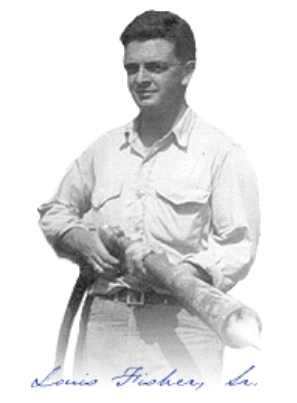Founder’s Story

In the 1950s, Lou Fisher, Sr. first started in the concrete business with Elastizell of California (which later evolved into Cell-Crete Corporation). Along with his partners Al Southard and Walter Olson, they developed lightweight concrete floor fill for the sound reduction market during the booming wood frame apartment construction.
Al and Lou, Sr. were interested in the exciting idea of cellular concrete as a revolutionary method of taking a historically heavy concrete material weight at 150 pcf and producing a lighter material using cellular foam at 100 pcf. Marketing inquiries had indicated that there was a big demand for an economical sound barrier on the floors of multistory wood frame apartments.
They needed to figure a method to place it on the 2nd and 3rd levels of a new structure. Lou, Sr. had witnessed a San Diego project where they were placing lightweight aggregate concrete with a crane and buckets on a new building. This type of installation created pandemonium on the project, and he decided that their new product had to be pumped into place instead of being craned.
Unfortunately, there were no concrete pumps made for their new cellular concrete at that time in the country. However, they experimented and eventually had a breakthrough with Karelius and Azar pumps, which were used by plasterers. In a relatively short time, pumping concrete had replaced cranes, buckets, and concrete belts.
After Al retired and Walter moved on, Lou, Sr. then worked on developing California Decorative Coatings, which focused on waterproofing for walkways and decks. After one year, he returned to the concrete business and joined Warren Gwaltney, who remained with Elastizell of California as a superintendent. They took California Decorative Coatings, changed its name to Cell-Crete Corporation and got back in the cellular concrete business that next day.
Under the new company name, they expanded the cellular concrete floor business, and then worked on developing the cellular roof deck market. In the coming years, they shifted their business of cellular concrete floors to the gypsum floor systems that could be more flexible with newer innovative floor covers and sound mats. Their unsung motto at the time was “to produce and install materials that met the growing needs of the contractor, owners, and renters for a comfortable shelter at a reasonable price.”
During major union strikes, most ready-mix plants would shut down. Their customers needed the material to keep their projects moving forward, so Cell-Crete developed a moveable to the job batch plant, supervised by his son, Lou Fisher. When Lou, Sr. retired, he handed over the reins to Lou who since then has expanded the customer base, product line, and areas of operation while maintaining the Cell-Crete philosophy of honest service, value, and responsibility to the construction market and the environment.
